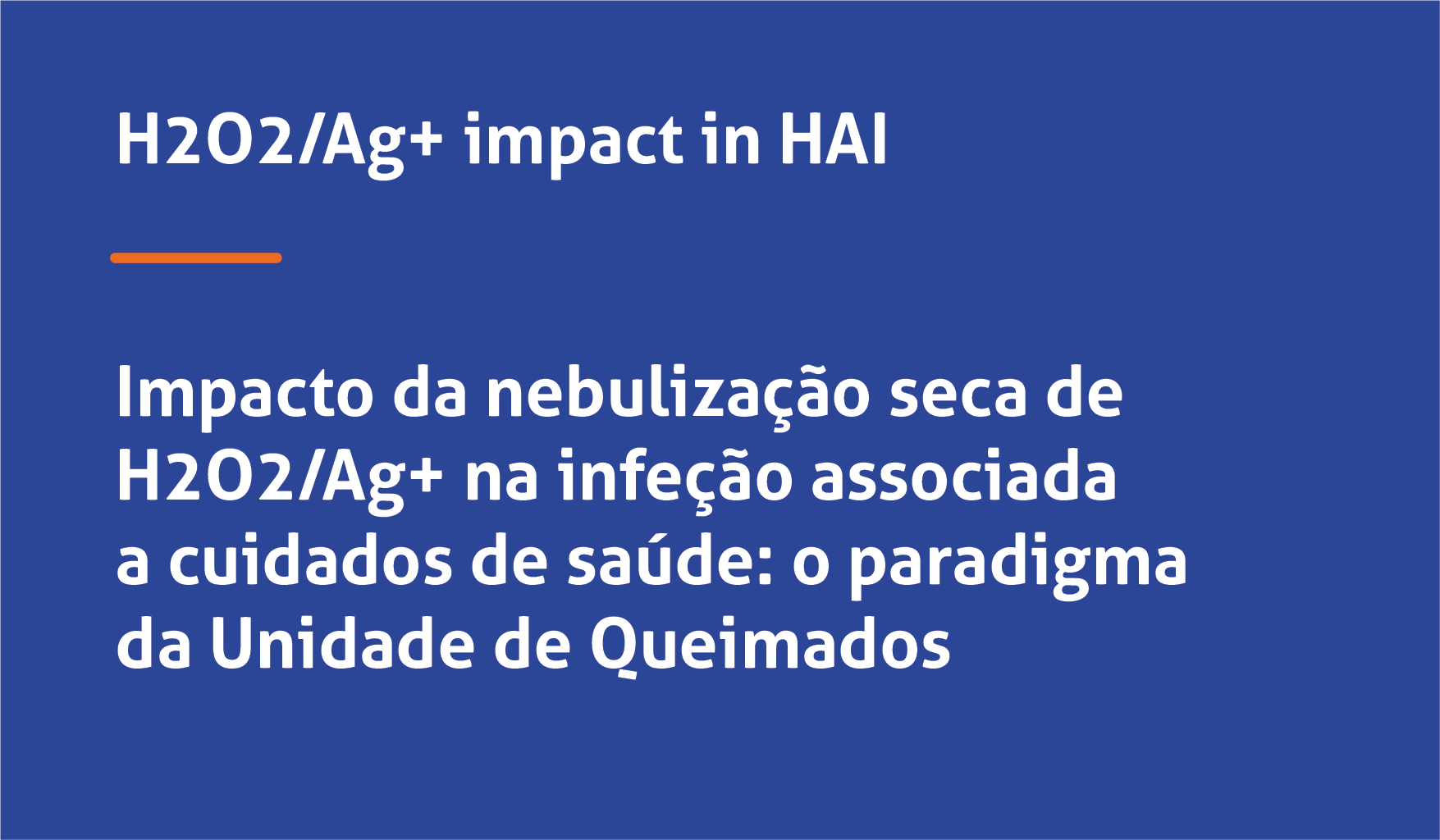Project Description
Impact of H2O2/Ag+ dry-mist on healthcare-associated infections: the Burn Unit Paradigma
Effective infection control strategies limiting the spread of drug resistance and reducing the risk of healthcare-associated infections (HAIs) needs to be urgently addressed. Following conventional manual cleaning with disinfectants, 10% of high-touch hospital surfaces remain contaminated. A comprehensive study is proposed to investigate the microbiological and clinical impact of adequate area decontamination upon HAI rates. The Burn Unit of São João Hospital, Porto will be used as study model; automated hydrogen peroxide (H2O2) vapor disinfection will be used for decontamination of surfaces of patient areas; a 3-year study quantitative study involving extensive microbiological environmental monitoring and cost-benefit analysis. Improved hospital disinfection should minimize environmental colonization and infection among burn patients and decrease antimicrobial administration, antimicrobial resistance and hence costs involved in patient care.
Abstract
The growing problem of healthcare-associated infections (HAIs) and in particular antimicrobial resistance has been mostly attributed to excessive antimicrobial prescription [1]. This topic is particularly relevant among critical care patients wherein 15% of HAIs result from cross-transmission [2]. In order to improve health quality services, effective infection control strategies limiting the spread of drug resistance and reducing the risk of HAI needs to be urgently addressed.
Following conventional manual cleaning with disinfectants, 60% of high-touch surfaces close to patients remain contaminated, due to obvious difficulties to ensure the correct disinfectant concentration, complete application to all areas and sufficient contact time. There is a 73% infection risk for patients admitted to rooms previously occupied by infected /colonized patients [3].
These difficulties can be overcome by developing a standardized protocol involving the release of vaporized disinfectant, at a target concentration during a pre-established period of time, through a portable unit.
A comprehensive study is hereby proposed to investigate the true microbiological and clinical impact of adequate area decontamination upon HAI rates.
It is imperative to unequivocally demonstrate that improved patient area decontamination reduces HAI rates as well as antimicrobial resistance, in order to support a rational approach to disinfection based on biocides active against multidrug resistant pathogens. Its adequate application could help to restrict antimicrobial use.
To demonstrate this hypothesis, automated hydrogen peroxide (H2O2) vapor disinfection will be used for decontamination of surfaces of hospital settings and therefore included as terminal disinfection measure in the infection control practices.
The Burn Unit of São João Hospital, Porto will be used as study model to perform a prospective three-year study quantitative study involving extensive microbiological environmental monitoring and cost benefit analysis. Previously, an in vitro comprehensive evaluation will assess the antimicrobial effect of H2O2 vapor supplemented with silver ions against different susceptible and resistant fungi and bacteria, relevant in critical care settings as well as potential resistance development to the biocide. This evaluation will be performed with surface dried and wet cells, as well as in microbial biofilms to better understand the real-case results.
We expect that improved hospital disinfection protocols should minimize environmental and cross-transmission colonization and infection among burn patients. This reduction should decrease the antimicrobial administration and the antimicrobial resistance and hence the direct and indirect costs involved in patient care. These health and cost-benefits could be the motto for other Portuguese hospitals to incorporate H2O2 vapor technology in their infection control strategy.
Funding Institution
Portal 2020
Global Budget
212.891,79 euros
CINTESIS Budget
212.891,79 euros
CINTESIS researchers involved
Luís Filipe Duarte Reino Cobrado (PI – Investigador responsável), Acácio Agostinho Gonçalves Rodrigues (Investigador Corresponsável), Elisabete Travassos Araújo Ricardo, Cidália Irene Azevedo Pina Vaz, Ana Isabel Silva Dias, Maria Manuel da Silva Azevedo, Isabel Alexandra Marcos Miranda

